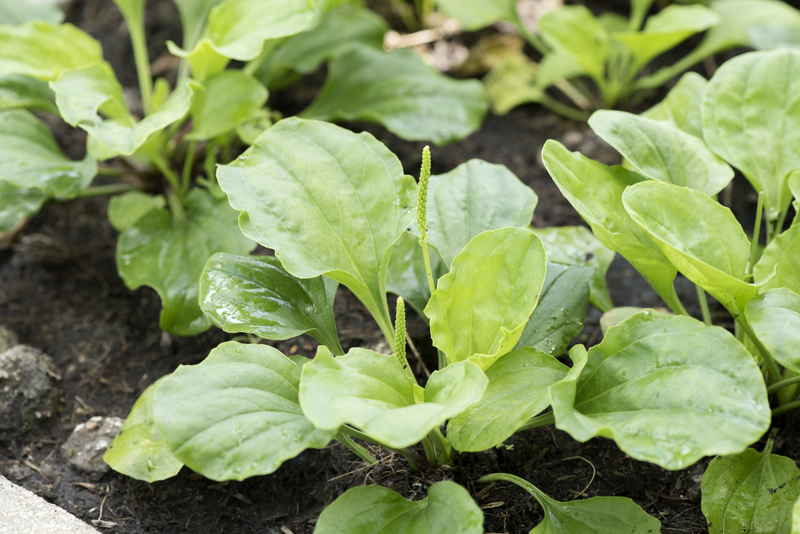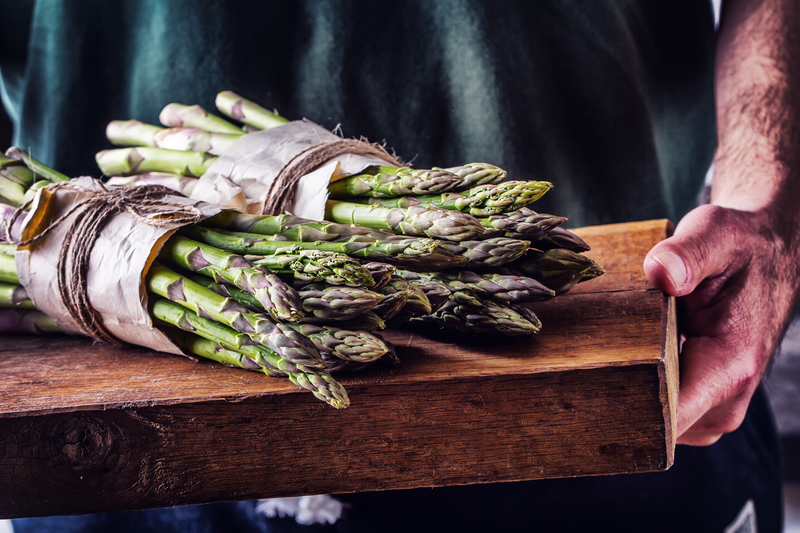Lush Green Borders and Fences That Give Your Garden Ultimate Privacy
Are you dreaming of a secluded sanctuary, where your backyard or garden is shielded by vibrant foliage and beautiful natural screens? Lush green borders and fences provide not just privacy, but also style, environmental benefits, and a sense of tranquility. Whether you have a sprawling estate or a modest patio, discover how nature's own walls can enhance your outdoor living experience.
Why Opt for Living Green Borders and Fences?
Traditional privacy fences can be stark, costly, and create a closed-off atmosphere. In contrast, living green fences merge aesthetically with your landscape, offering year-round beauty and personalized character. Here's why a green alternative is a superior choice:
- Enhanced Privacy: With proper plant selection, lush borders effectively block out neighbors, noise, and street views.
- Environmental Benefits: Green fencing supports wildlife, improves air quality, and reduces urban temperatures.
- Curb Appeal: Well-chosen plants add color, texture, and interest--boosting your property's visual value.
- Natural Sound Barrier: Dense foliage absorbs noise for a peaceful retreat.
- Personal Touch: Each planting scheme is unique, reflecting your style and needs.

Choosing the Right Living Privacy Fence for Your Garden
When planning your living green borders and fences, consider these key factors:
- Sun and Shade: What are your garden's light conditions?
- Soil Type: Is the soil clay, sandy, loamy, or well-draining?
- Maintenance Level: How much pruning and care can you provide?
- Desired Height & Width: Do you need tall hedges or a more subtle boundary?
- Growth Rate: Do you want rapid privacy or are you willing to wait for perfection?
Evaluate your space to determine which plants or design approaches will offer the ultimate green privacy fence for your needs. Below, we explore the top choices and techniques.
Best Plants for Lush Green Borders and Privacy Fences
1. Evergreen Hedging Plants
Evergreens retain their foliage all year, ensuring continuous privacy in every season. Some popular options include:
- Boxwood (Buxus): A classic choice, boxwood adapts well to shaping and forms dense, formal barriers.
- Yew (Taxus baccata): Renowned for its longevity and deep green needles, yew produces thick screens suitable for both sun and shade.
- Holly (Ilex): With shiny, spiny leaves, holly deters intruders and can develop into a lush, broad hedge.
- Privet (Ligustrum): Fast-growing and adaptable, privet hedges quickly reach your desired height.
2. Fast-Growing Privacy Plants
If patience isn't your virtue, choose fast-growing species for speedy results:
- Laurel (Prunus laurocerasus): Often called cherry laurel, this glossy-leaved shrub can shoot up to 15-20 feet rapidly.
- Bamboo: Perfect for modern gardens, non-invasive clumping bamboos (such as Fargesia) form tall, dense screens in just a few years.
- Photinia 'Red Robin': Offering spectacular red-tipped foliage, this evergreen shrub provides both color and privacy.
- Pittosporum: Hardy and fragrant, Pittosporum is a flexible hedging plant suited to mild climates.
3. Flowering and Fragrant Hedges
Why not combine privacy with beauty and scent? Flowering hedges offer multi-sensory appeal:
- Rose (Rosa rugosa): Tough, thorny, and blooming throughout summer, rugosa roses create a fortified, fragrant border.
- Lilac (Syringa): Gorgeous spring blossoms offer both height and a delightful aroma.
- Camellia: Evergreen leaves and eye-catching winter flowers brighten any fence line.
- Lavender Hedging: Low-growing but aromatic and beautiful, lavender is ideal for more subtle privacy needs.
4. Unique and Exotic Privacy Screens
For a truly exceptional look, try something different:
- Giant Reed (Arundo donax): Towering and reed-like, this plant creates a lush, Mediterranean ambiance.
- Miscanthus (Miscanthus sinensis): Ornamental grasses like miscanthus add movement and texture, and can reach 8 feet or more.
- Hedge Maple (Acer campestre): A deciduous, easily managed tree perfect for tall, informal fences.
Design Tips for Green Fences and Borders
Now that you have ideas on plants, let's turn to design principles for living garden fences:
Layering for Depth
Combine plants of varying heights, textures, and bloom times to create a visually interesting and full privacy screen. Place the tallest, densest plants at the back, mid-height shrubs in front, and groundcovers or flowering perennials at the base.
Incorporating Seasonal Interest
Ensure your privacy fence remains delightful year-round by mixing evergreens with deciduous shrubs and plants with attractive winter stems or berries.
Using Climbing Plants & Trellises
Maximize privacy in compact spaces by pairing climbing plants--such as honeysuckle, clematis, or jasmine--with fences, pergolas, or existing walls. This instantly boosts height and greenery.
Blending Hardscape and Green Borders
Combine low natural stone walls with lush hedging or use metal grid fencing as a support for vines and climbers. This living-meets-structural approach delivers security without sacrificing softness.
How to Plant and Maintain Lush Green Privacy Fences
Planting for Success
- Spacing: Follow recommended plant spacing for each species to avoid overcrowding and ensure healthy growth.
- Soil Preparation: Dig in plenty of organic compost before planting to provide nutrients and retain moisture.
- Watering: Establish new borders with regular, deep watering--especially during dry spells.
- Mulching: Use bark chips, straw, or leaf mold to suppress weeds and maintain soil moisture.
Ongoing Care
- Pruning: Regular trimming encourages bushiness and keeps your green fence tidy.
- Feeding: Annual top-dressing with compost, seaweed, or slow-release fertilizer boosts vigour.
- Pest and Disease Watch: Monitor for common issues such as aphids, mildew, or dieback--and choose disease-resistant cultivars whenever possible.
- Weed Control: Maintain a neat base by hand-weeding or with mulches.
Combining Privacy with Wildlife Habitat
A lush green privacy fence offers more than seclusion--it's a haven for birds, pollinators, and beneficial insects. To nurture a thriving ecosystem:
- Mix Native Plants: Native species support local wildlife and often require less maintenance.
- Berry and Nut Producers: Incorporate holly, hawthorn, hazel, or cotoneaster for food sources.
- Evergreen Shelter: Bushy evergreens like laurel and yew provide year-round cover for nesting birds.
- Flower Diversity: Layering in different blooms supports bees and butterflies throughout the growing season.
Overcoming Common Challenges with Living Green Borders
While lush green fences are eye-catching and practical, some gardeners may encounter the following challenges:
- Limited Space: Opt for columnar evergreens such as Thuja 'Smaragd' or tightly clipped box.
- Shady Yards: Choose shade-tolerant species like yew, holly, or Aucuba japonica.
- Drought-Prone Areas: Mediterranean plants (like lavender and rosemary) and ornamental grasses are ideal for dry climates.
- Poor Soil: Improve fertility with organic matter or select robust species such as privet or hornbeam.
- Deer and Rabbits: Plant spiny holly, fragrant lavender, or strong-smelling herbs which are less palatable to wildlife grazers.
Creative Ideas for Living Fences and Green Borders
- Espalier and Pleaching: Train fruit trees in flat, fence-like formations to maximize yield and privacy.
- Willow Hurdles: Plant living willow rods in woven patterns for a sustainable, whimsical fence.
- Mixed Hedges: Combine several plant varieties in a single border for a cottage-garden look and enhanced biodiversity.
- Bonsai Hedges: Maintain miniature hedging (such as boxwood) in pots for patios or balconies.
- Vertical Gardens: Use living wall systems packed with ferns, herbs, or succulents to add privacy in small, modern spaces.

The Environmental Impact of Living Green Fencing
Switching to green borders and living plant fences is an eco-friendly decision:
- Carbon Capture: Hedges absorb CO2 and airborne pollutants.
- Temperature Control: Foliage provides natural cooling and windbreaks.
- Stormwater Management: Deep roots reduce erosion and soak up rainwater.
- Minimal Waste: Unlike manufactured fencing, plants are renewable and biodegradable.
Bonus Tip: Compost hedge trimmings and fallen leaves for a zero-waste solution!
Conclusion: Your Guide to Ultimate Garden Privacy
Whether you seek a towering hedge, a fragrant flower wall, or an exotic living sculpture, lush green borders and fences transform your outdoor space into a tranquil, private paradise. With careful plant choices, smart design, and attentive care, your garden will be beautiful, secluded, and eco-friendly. Start planning today to enjoy the ultimate privacy in your own green haven for years to come!
Quick Recap: Steps to a Lush Green Privacy Fence
- Assess your conditions: soil, light, space, and climate.
- Select plants for your needs: evergreen, fast-growing, flowering, etc.
- Plan and plant your borders using layering or creative techniques.
- Cultivate and care for your screen with pruning, watering, and feeding.
- Enjoy the benefits: privacy, beauty, wildlife, and environmental gains.
Ready to create an eye-catching, lush green fence for ultimate privacy? There's a living solution for every garden--large or small, formal or wild. Start today and enjoy the serenity of your own private green retreat!
```